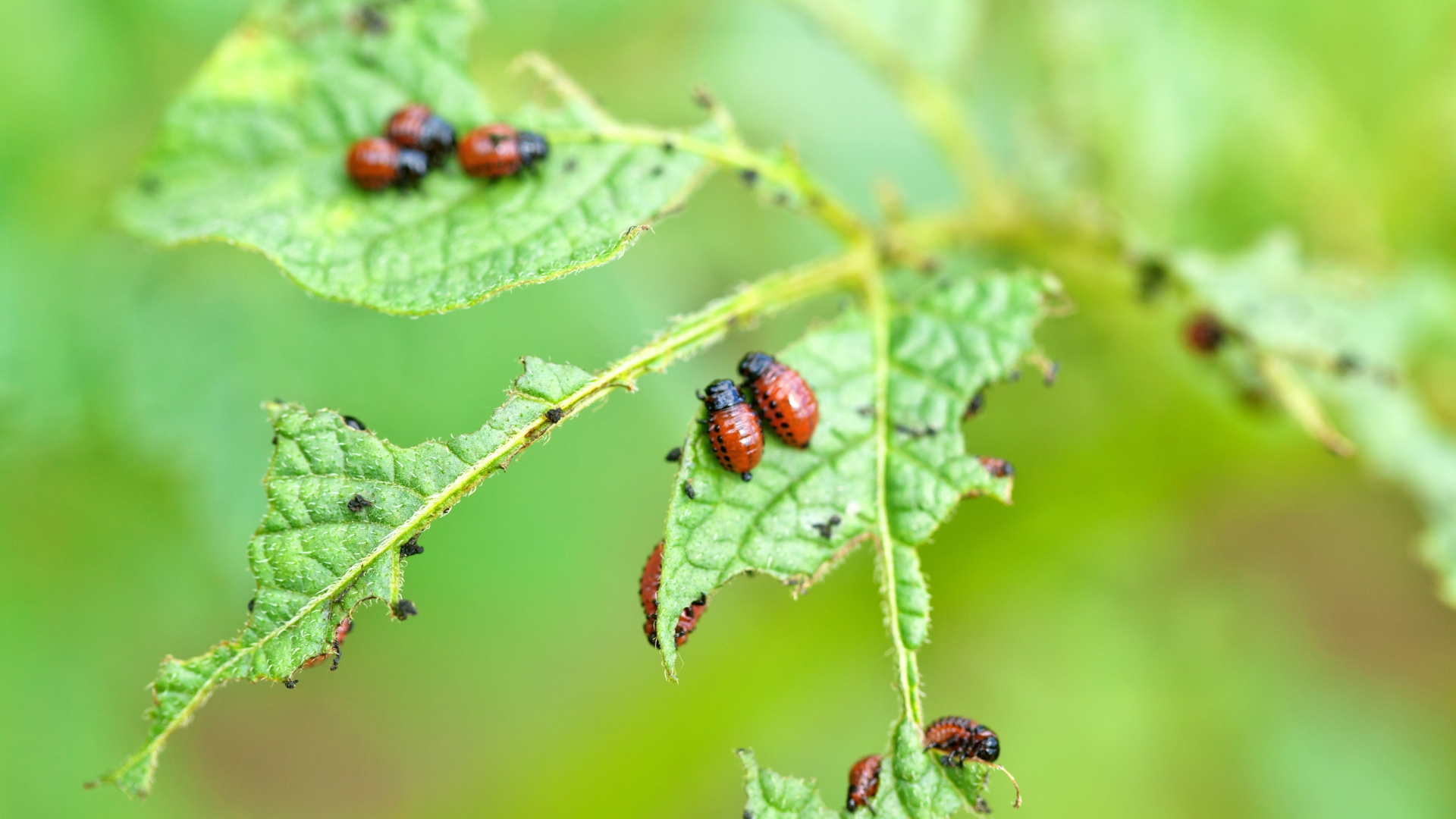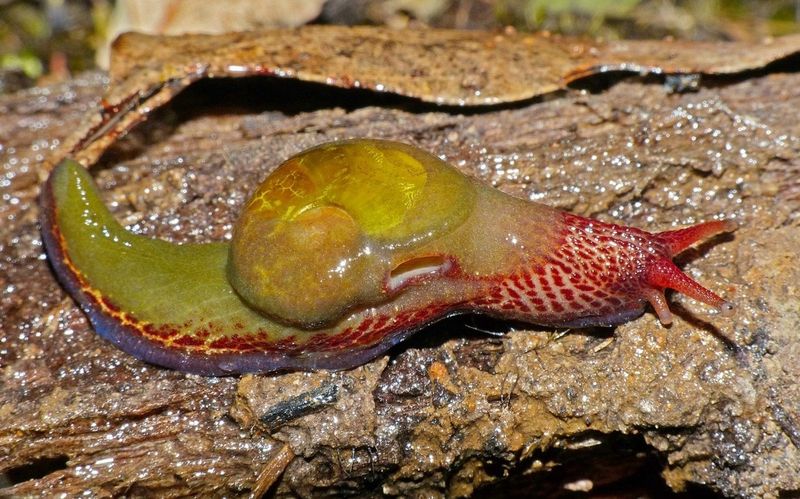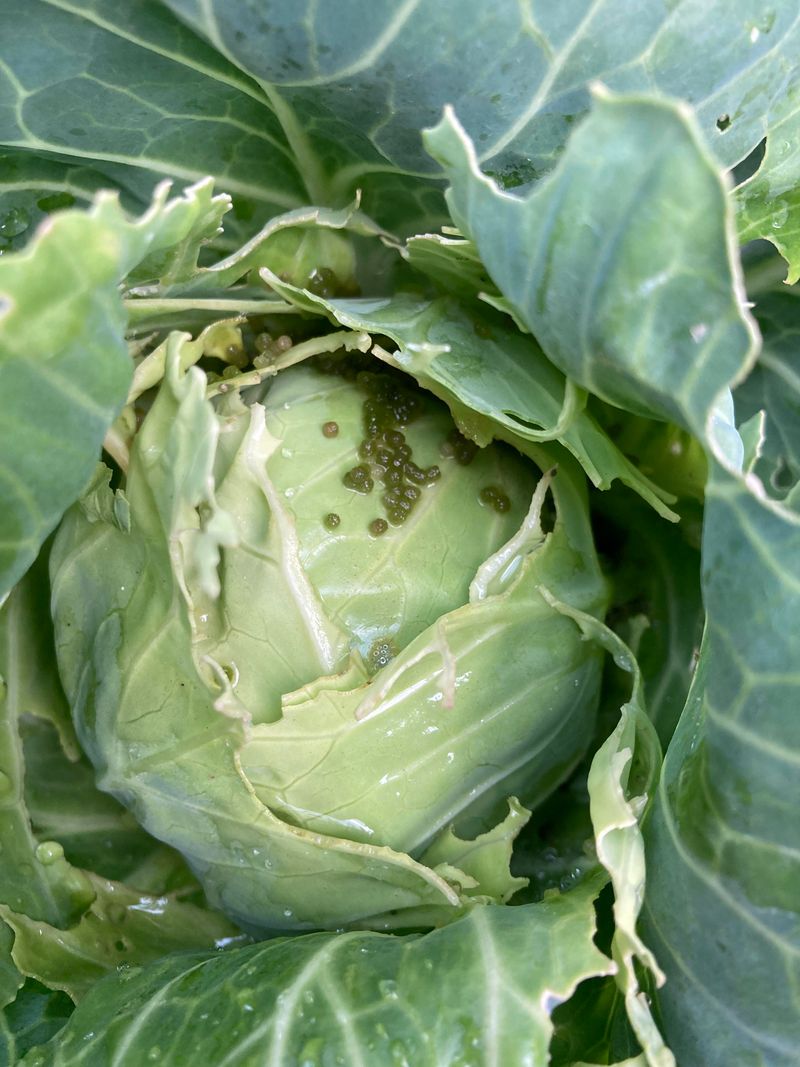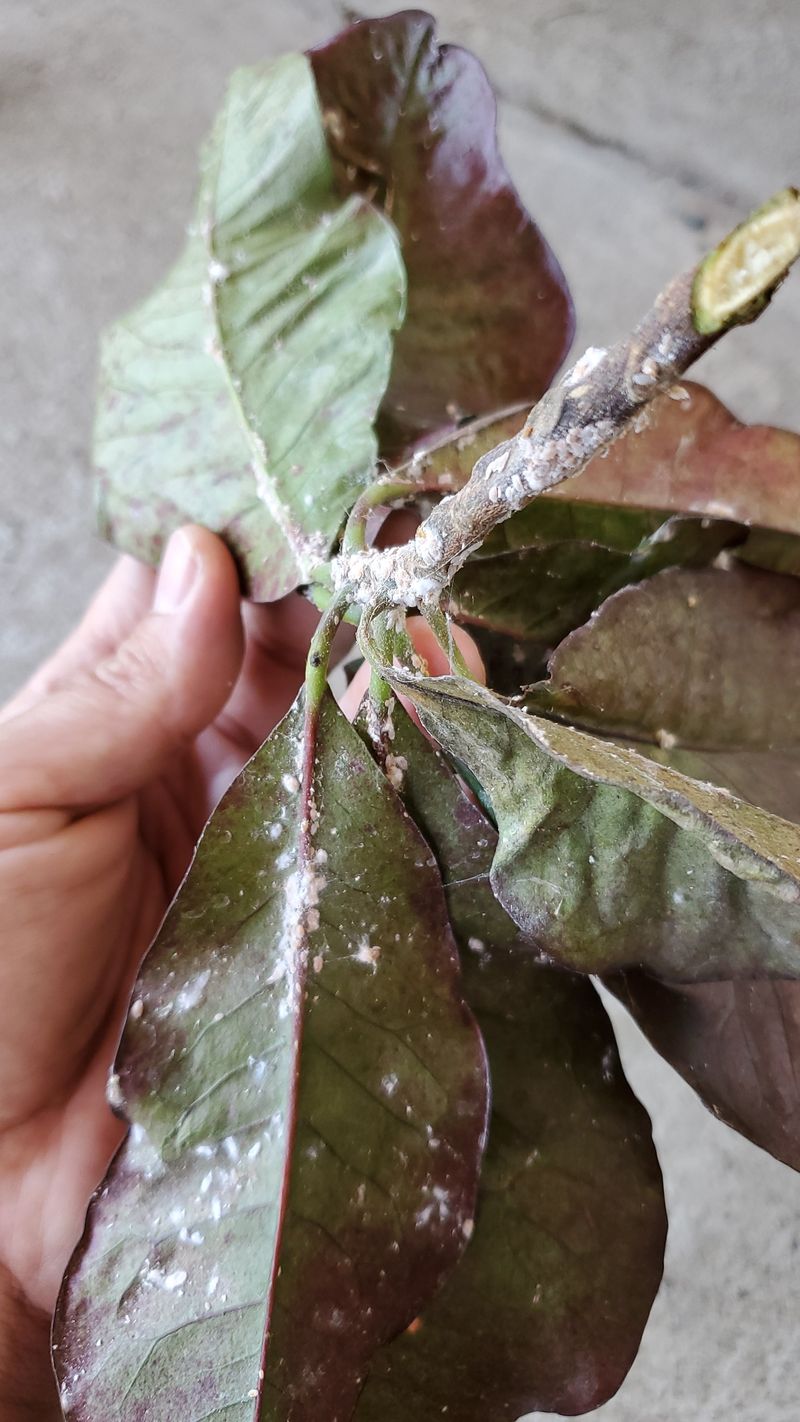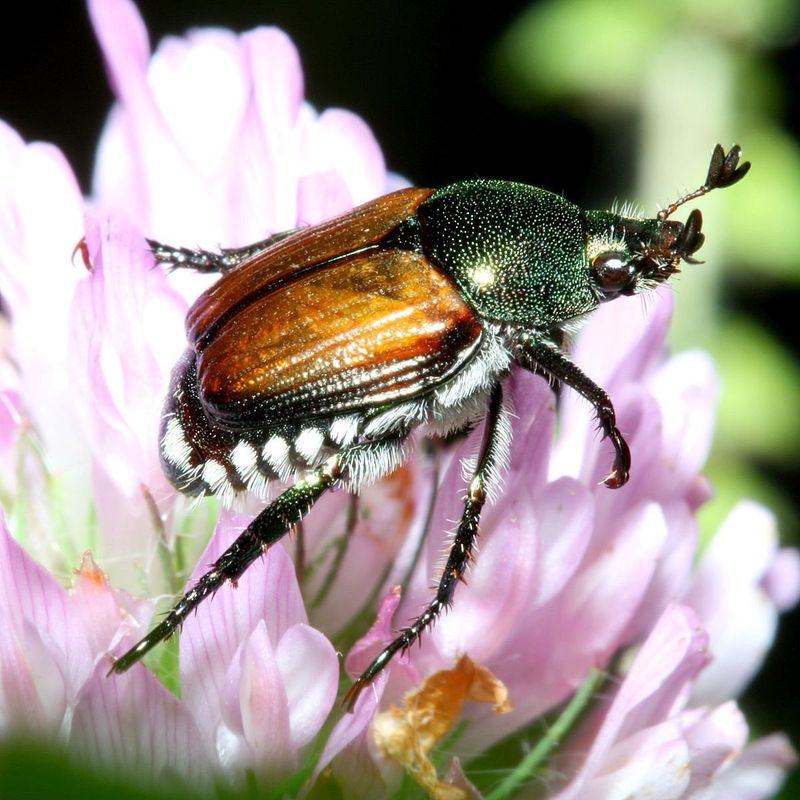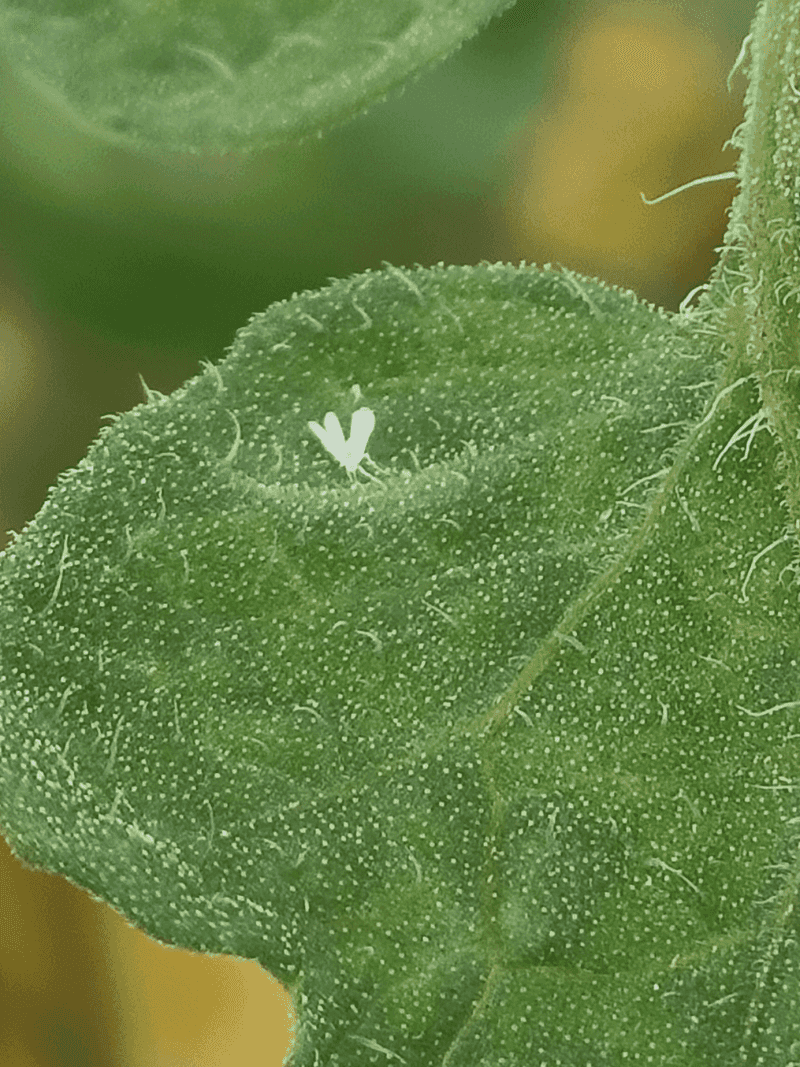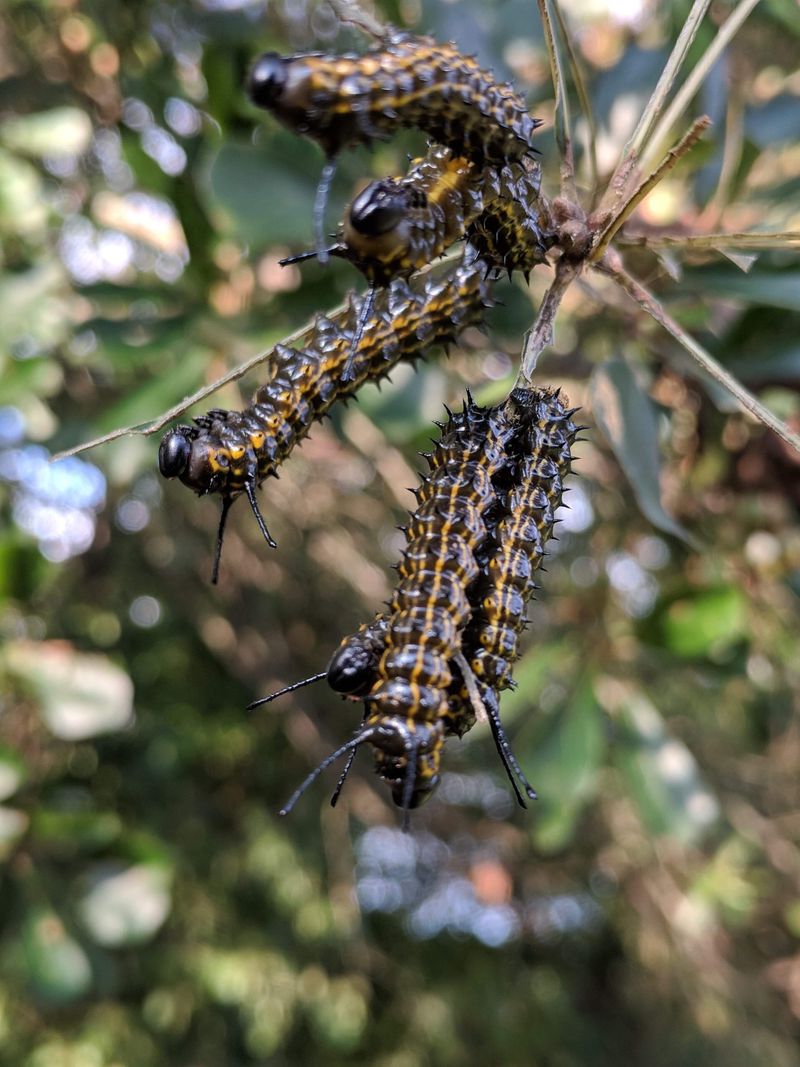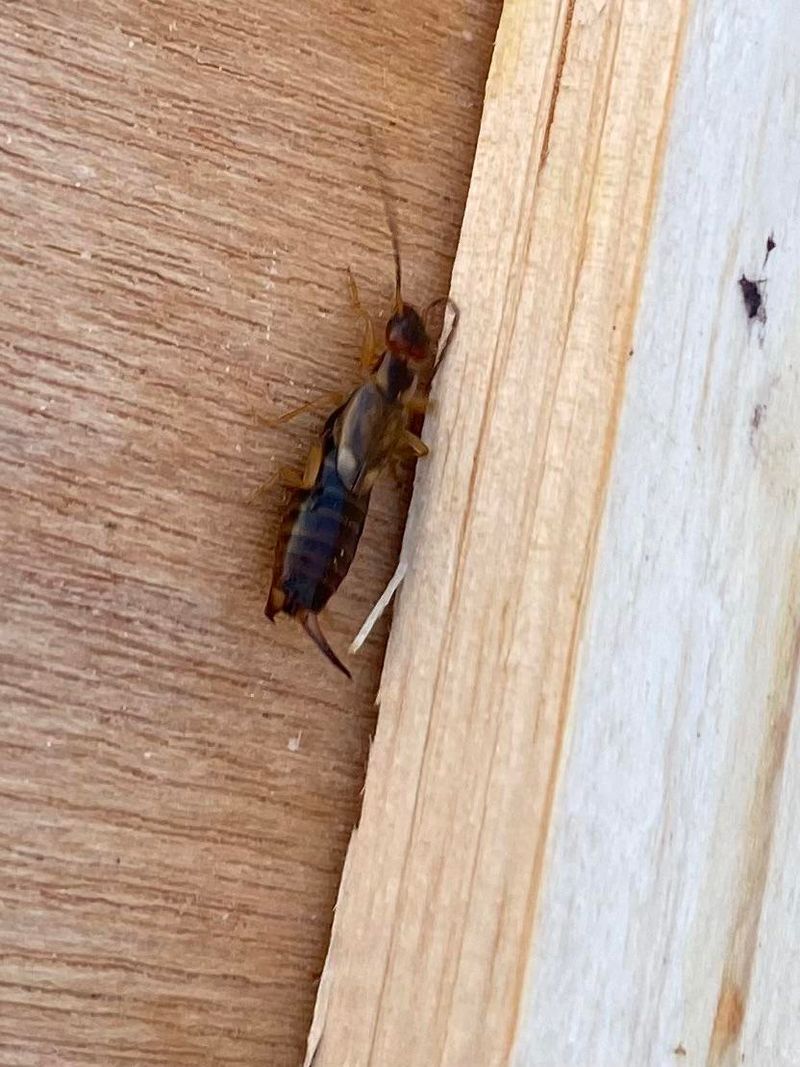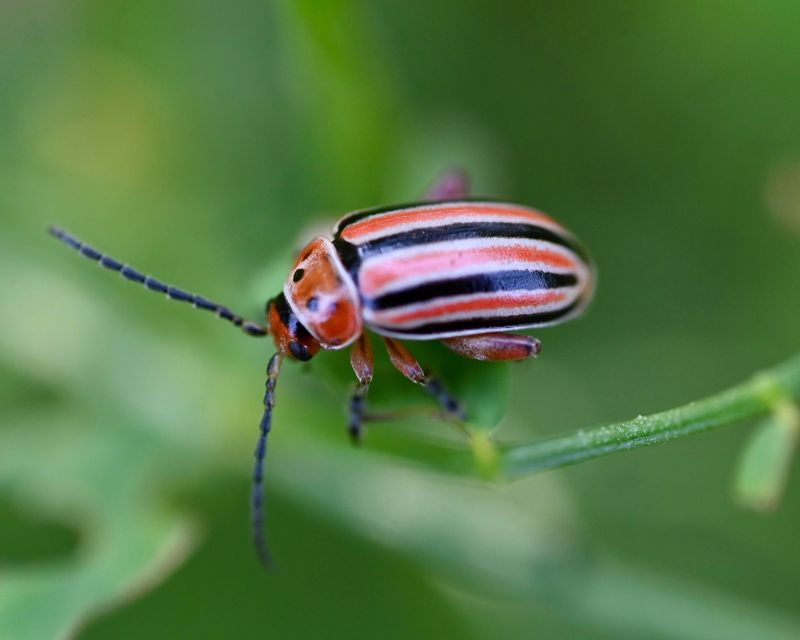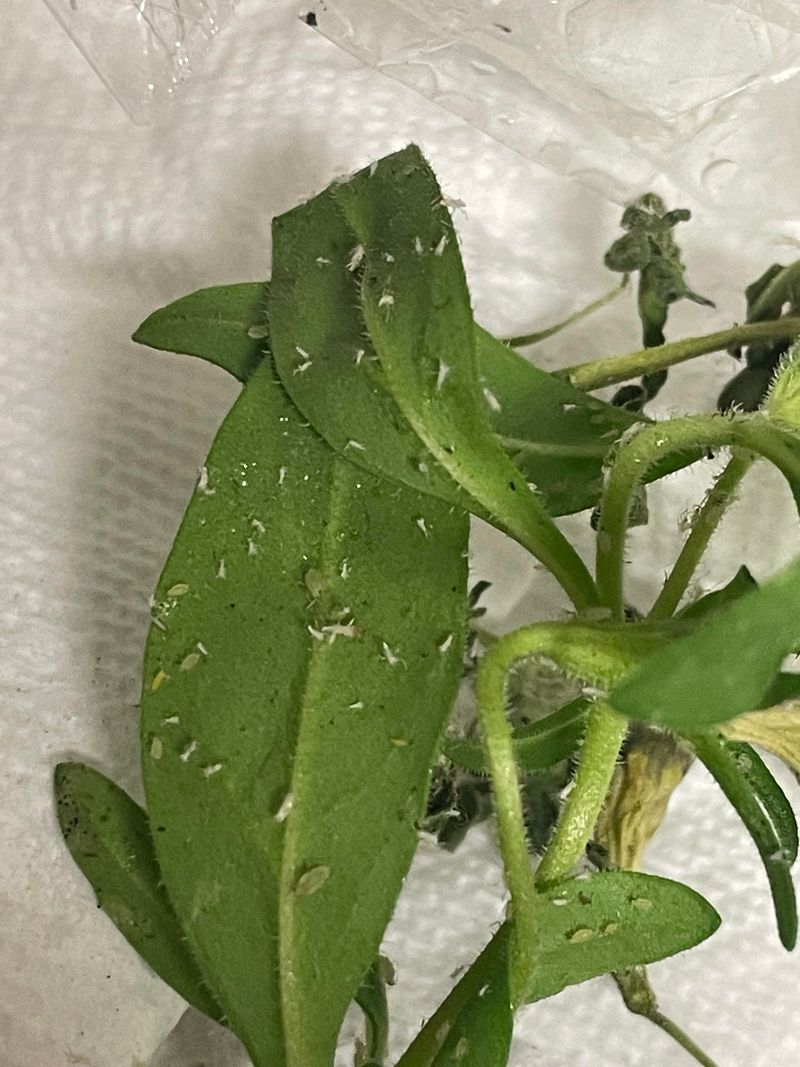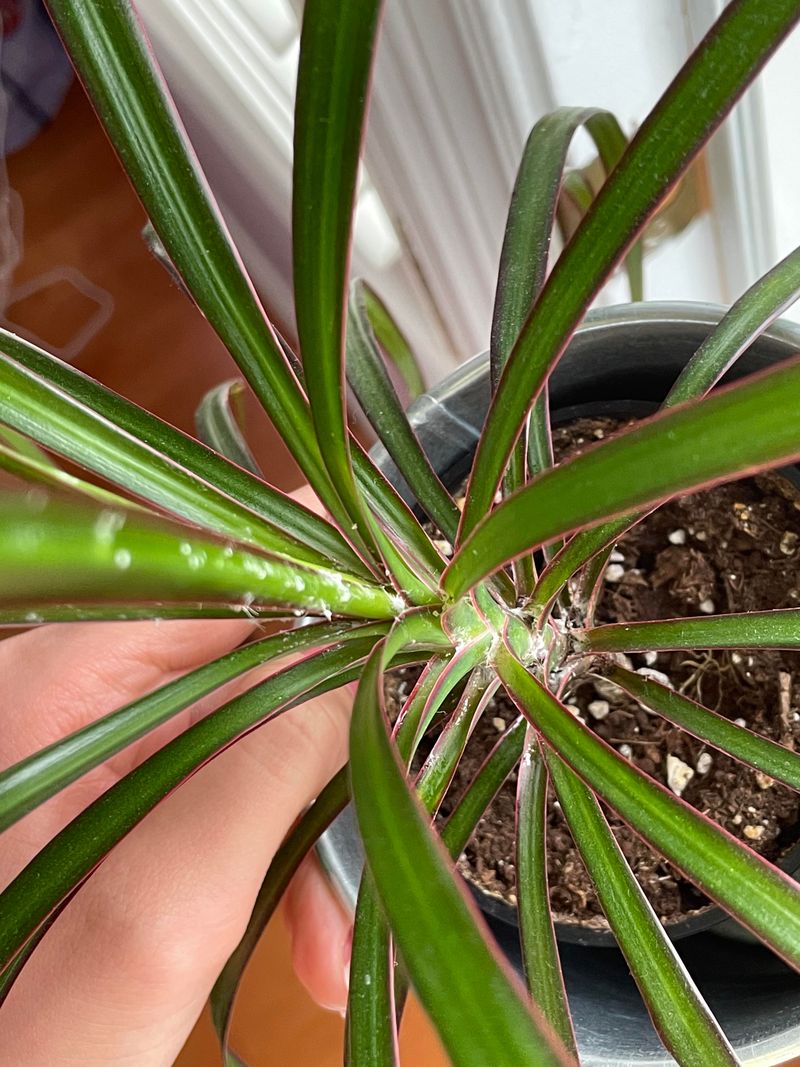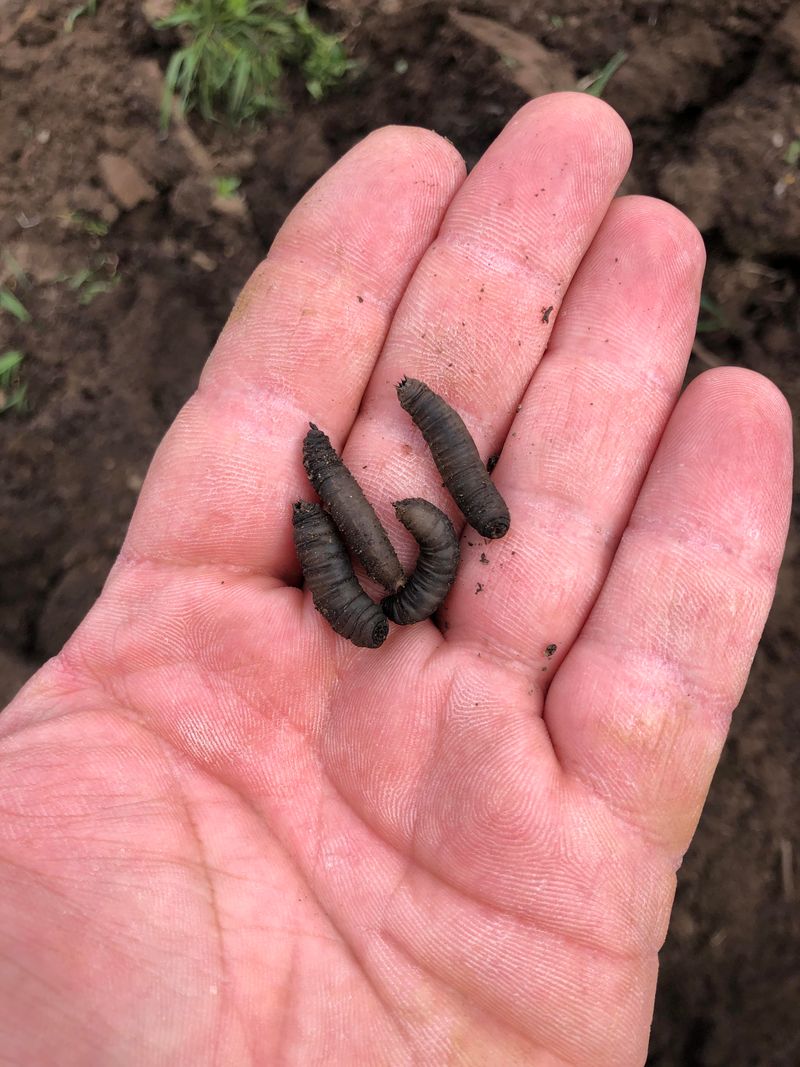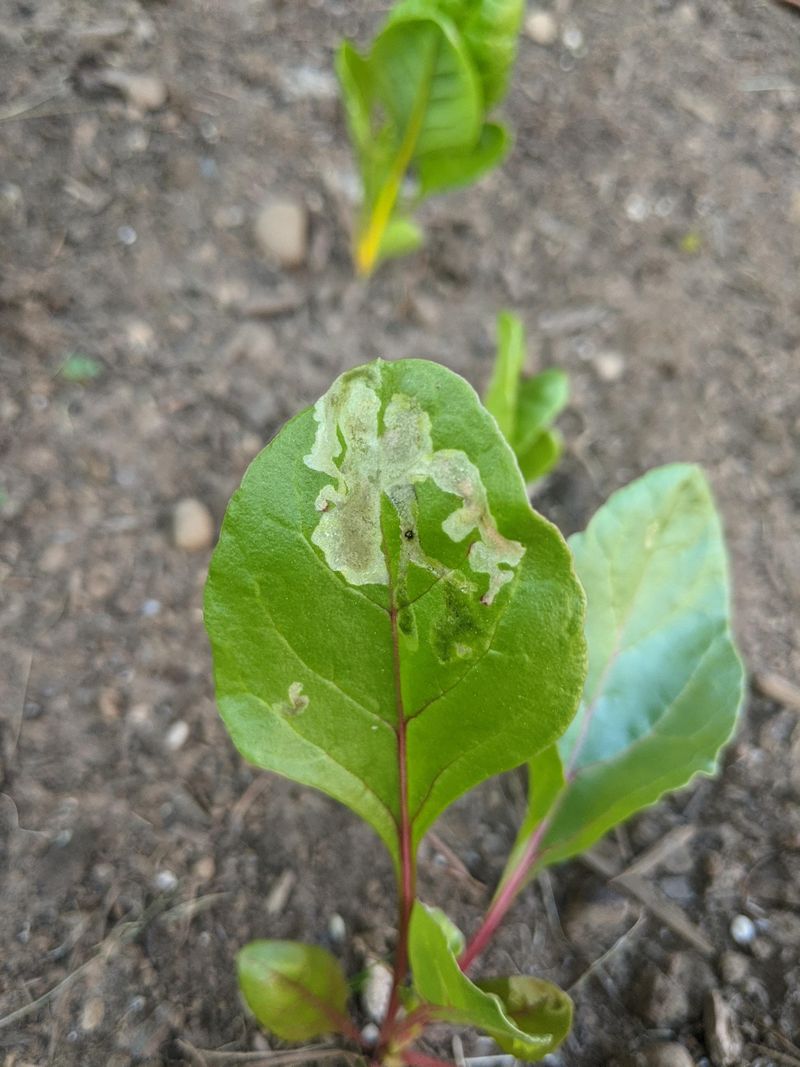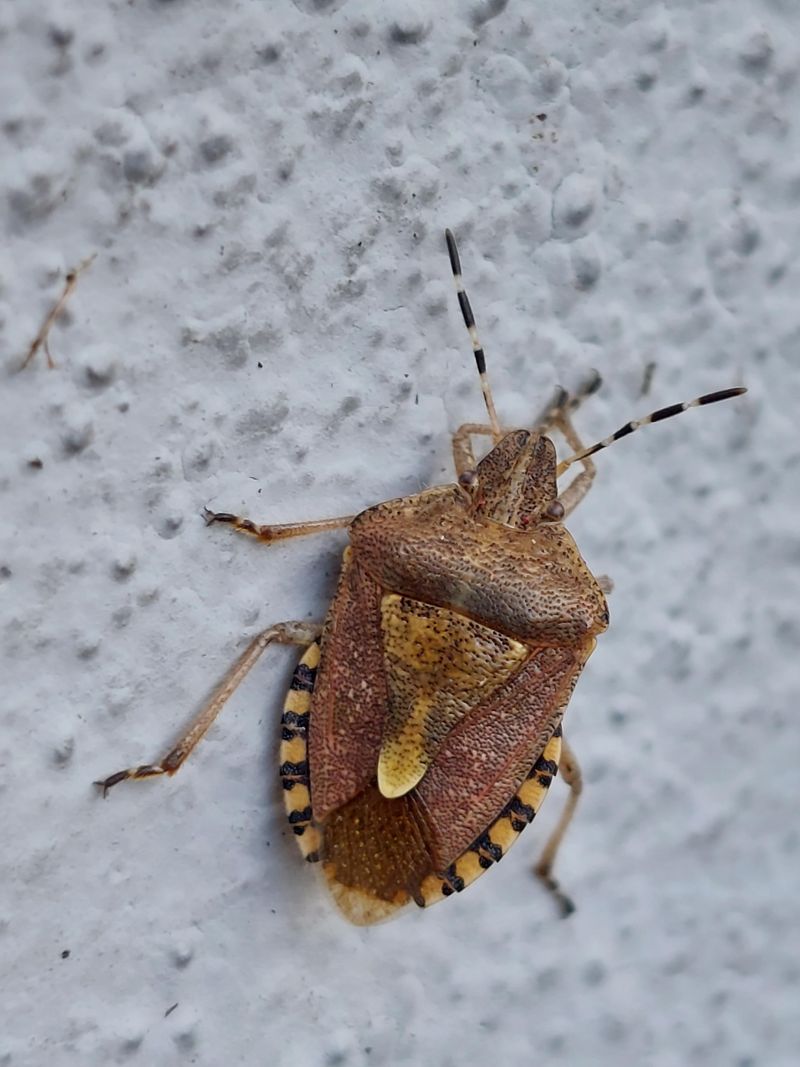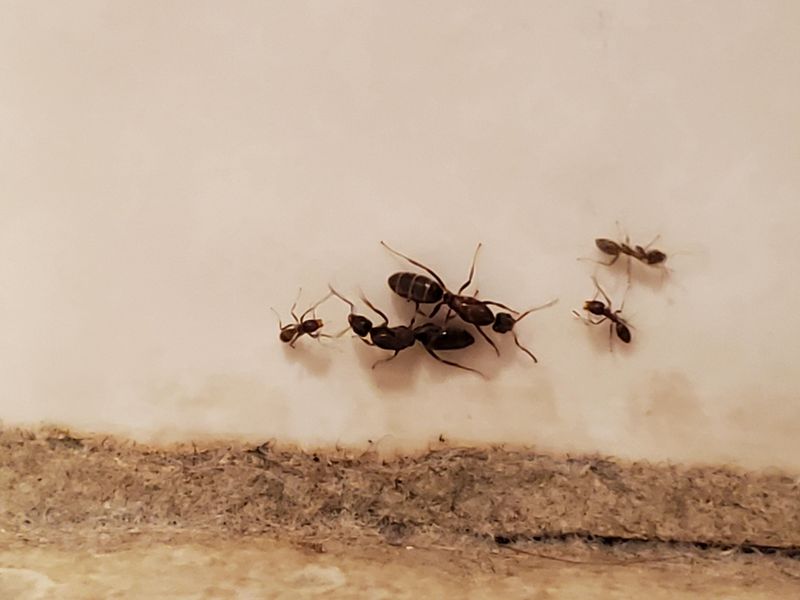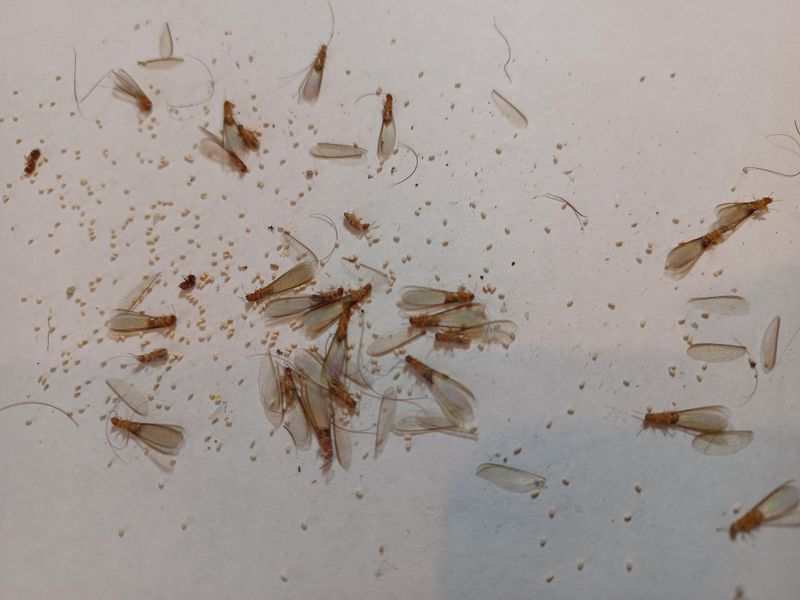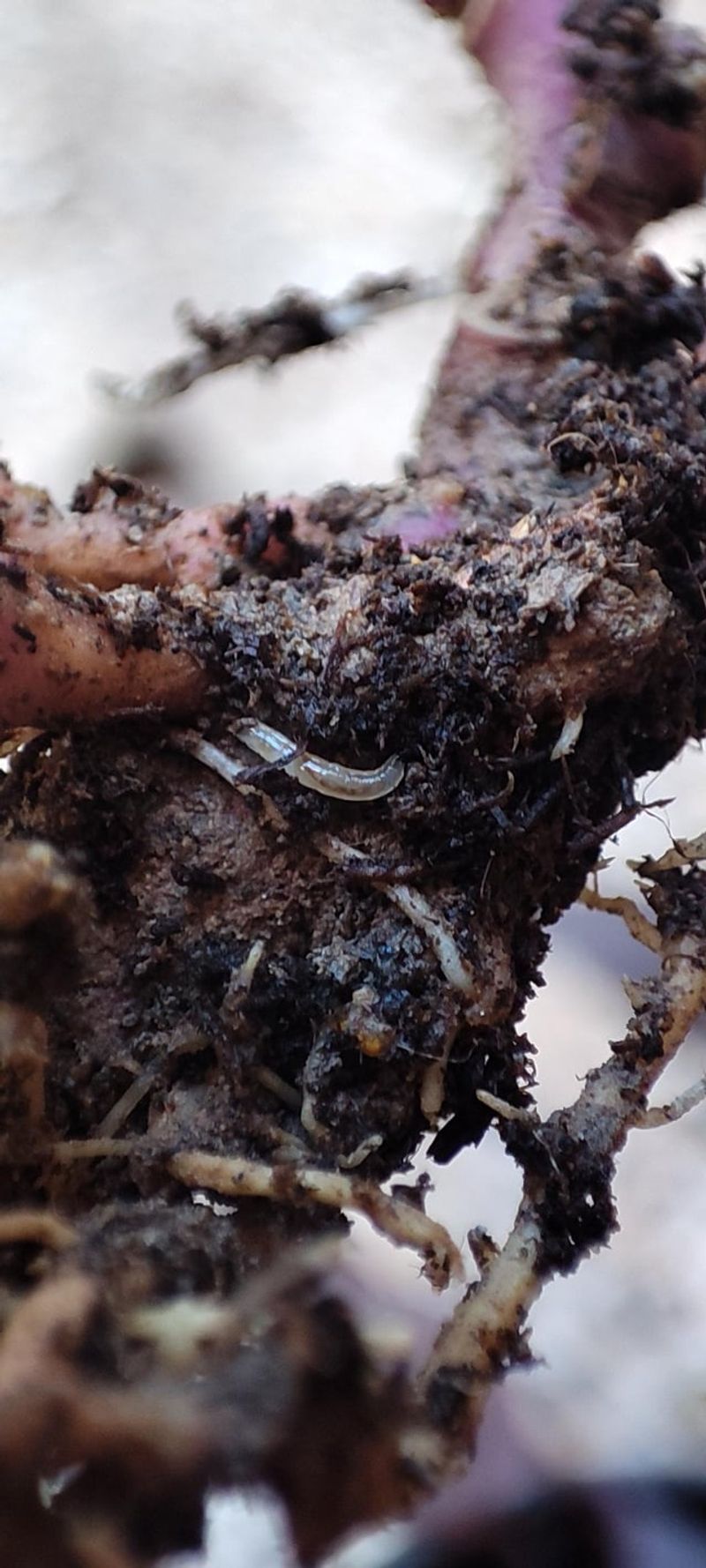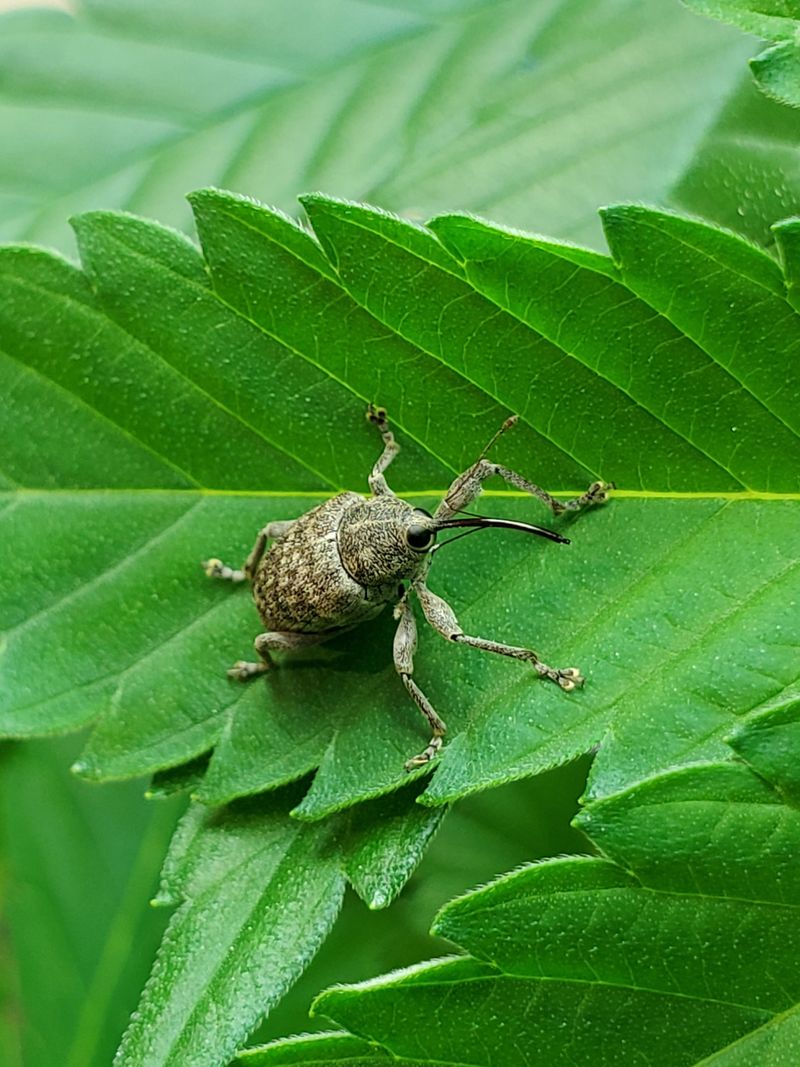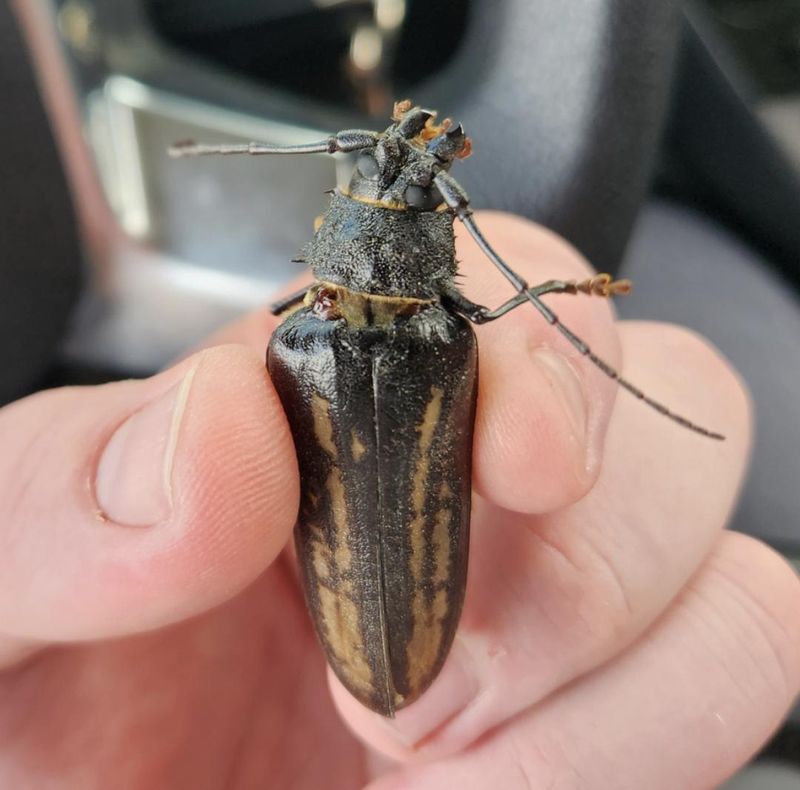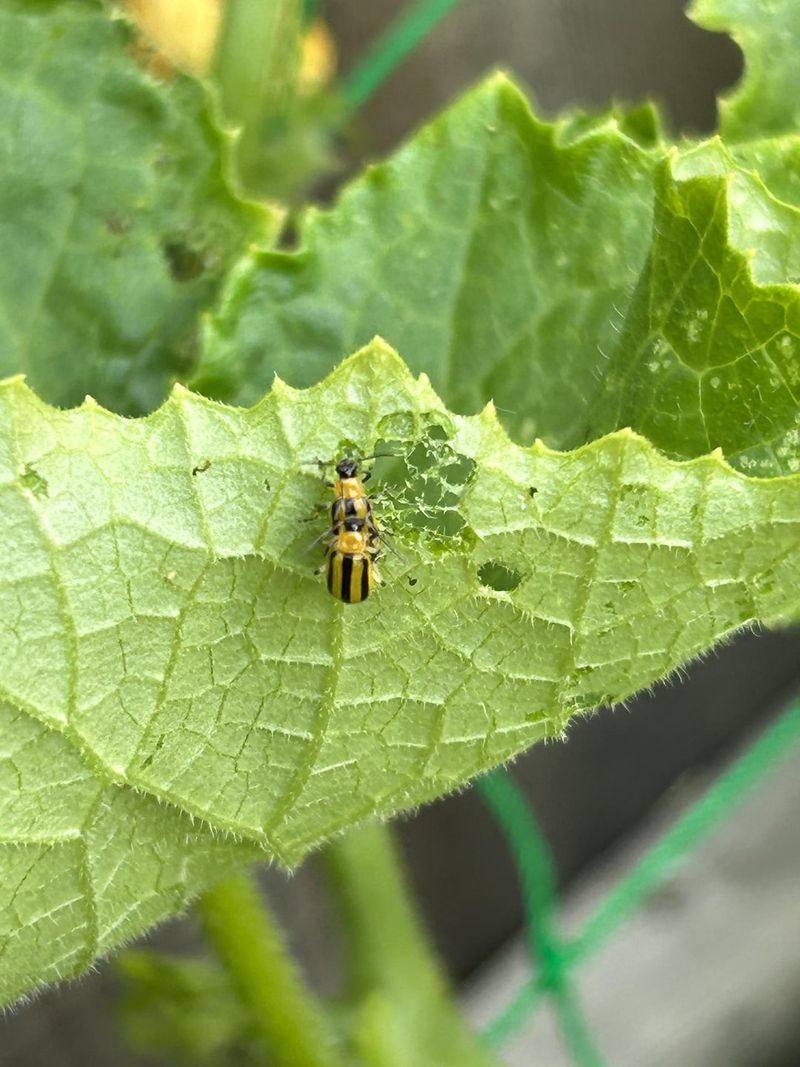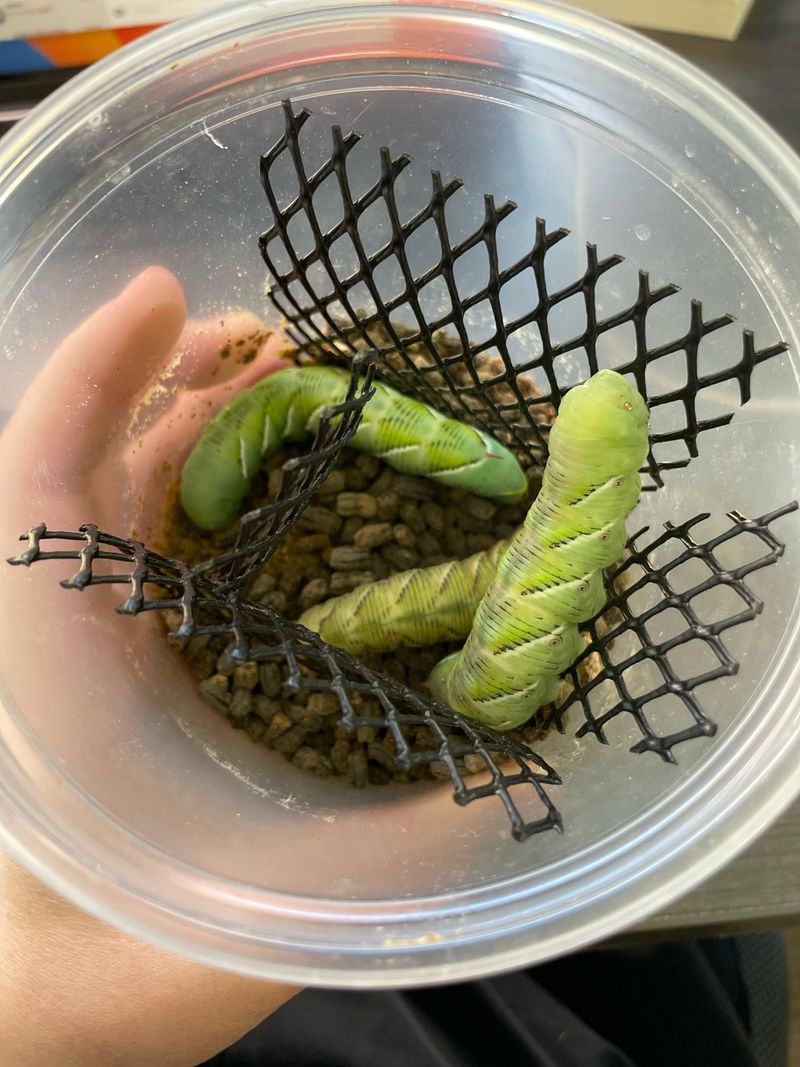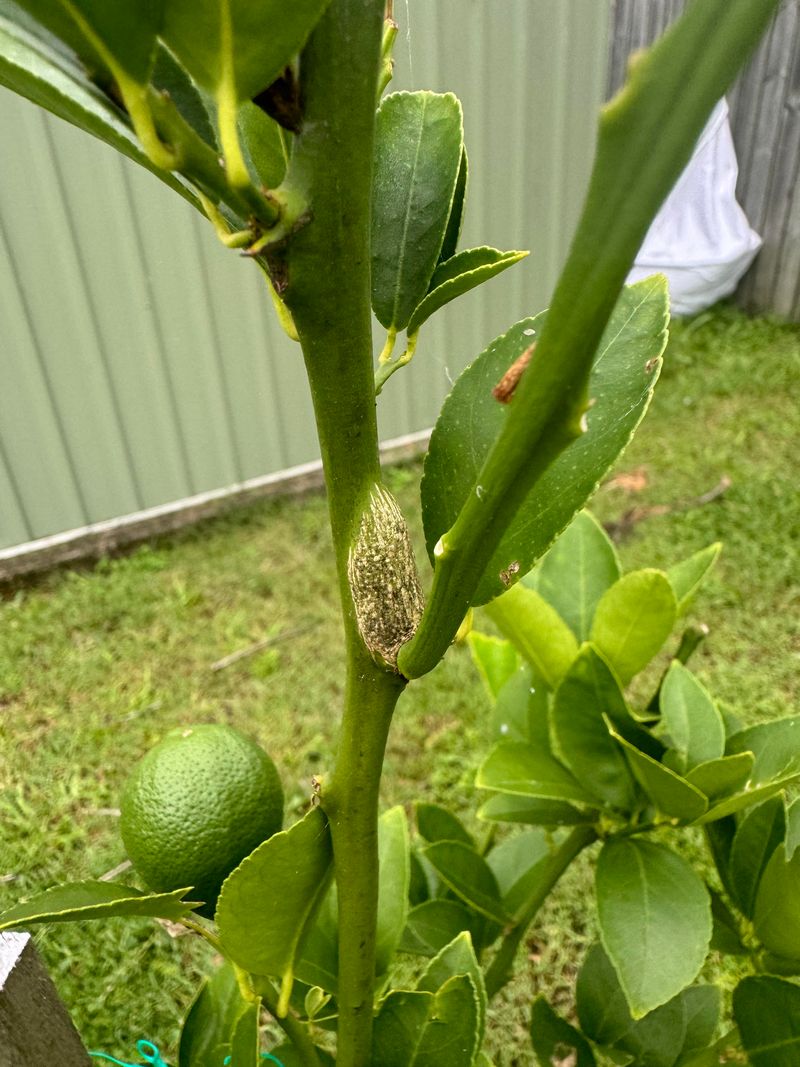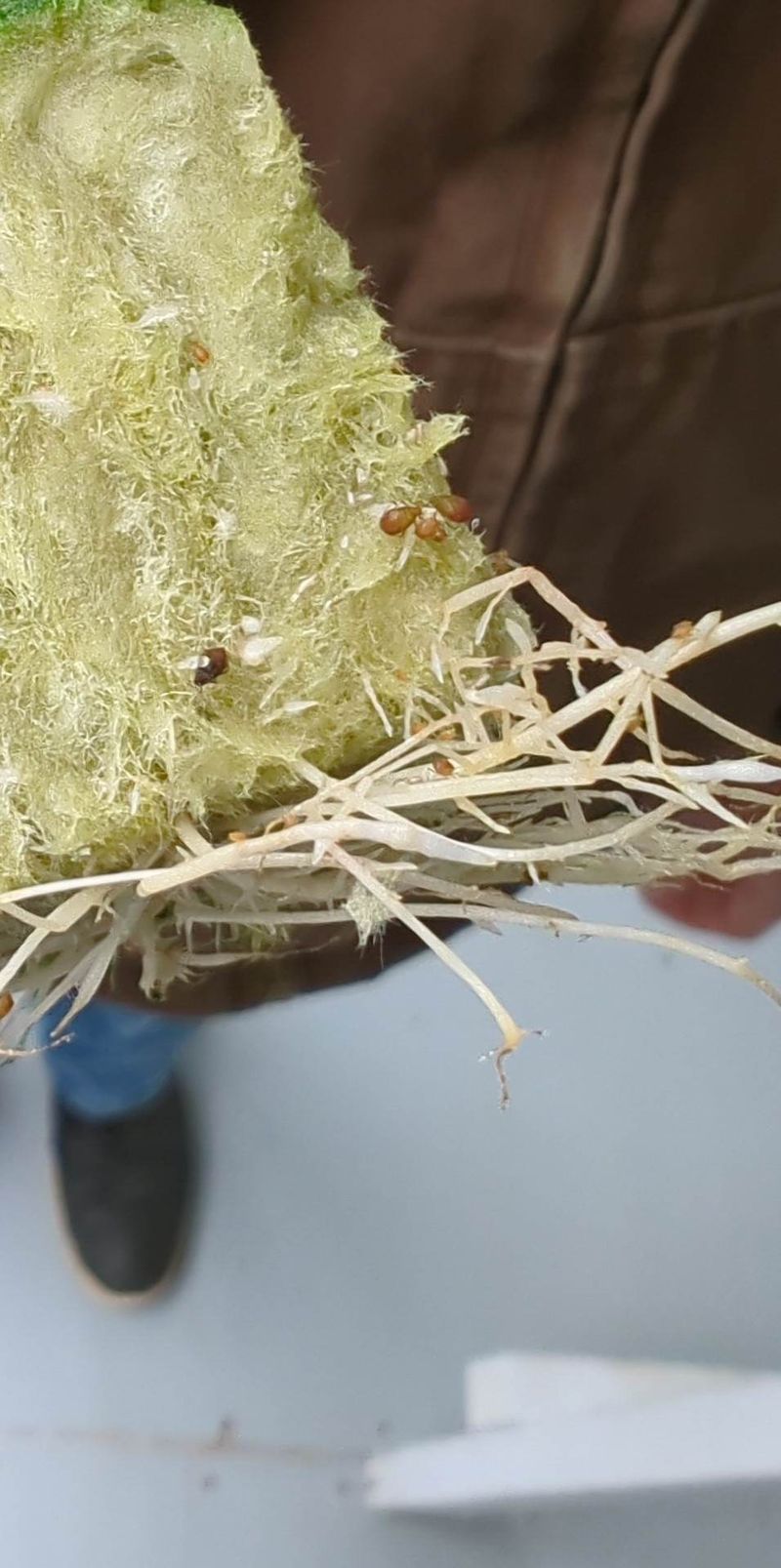Gardening is a delightful hobby, but along with the therapeutic joy of nurturing plants comes the inevitable invasion of pesky pests.
These little intruders can turn your garden into their playground, leaving you with chewed leaves and ruined crops. Fear not, as we embark on a lively journey through the world of garden invaders, discovering who they are and how to kindly evict them.
With a sprinkle of humor and a dash of creativity, we’ll arm you with natural solutions to keep your garden thriving.
Prepare for a playful yet informative guide to outsmarting those plant-munching mischief-makers!
1. Aphids
Imagine tiny green vampires sucking the life juice out of your roses! Aphids are the sneaky villains of the garden, gathering in groups and spreading plant chaos. Luckily, a soapy water spray can send them packing, or invite ladybugs—nature’s pest control experts—to dine on them.
Aphids can reproduce faster than you can say ‘plant apocalypse,’ so vigilance is key. Regular checks and a good squirt of neem oil will keep these sap-sucking bandits at bay. Let your garden be the talk of the bug-free town!
Embrace companion planting with garlic or onions to give aphids a stinky surprise. These pungent pals act as natural repellents, ensuring your plants stay vibrant and aphid-free. With a little teamwork, your garden can blossom without these tiny troublemakers.
2. Snails and Slugs
Ever felt like your lettuce turned into Swiss cheese overnight? Meet the infamous duo: snails and slugs, the slimy gourmets of leafy greens. These nocturnal nibblers love a good leaf salad, but a sprinkle of crushed eggshells will turn their feast into defeat.
In the battle against slime, coffee grounds are your secret weapon. Sprinkle them around plants to create a caffeine barrier that snails and slugs will detest. This organic trick keeps them away while enriching the soil.
Create a haven for natural predators like frogs and hedgehogs. With these allies and some DIY beer traps, you’ll keep slug and snail parties off the guest list. Cheers to a lush, leaf-loving garden without the slime!
3. Cabbage Worms
Cabbage worms are the uninvited guests turning your cabbage patch into a buffet. The culprits? White butterflies whose larvae munch away like it’s an all-you-can-eat affair. Hand-picking these green grubs can be oddly satisfying, especially when armed with a bucket of soapy water.
Introducing row covers is like setting up a bouncer at a club; it keeps those fluttering freeloaders out. These covers act as a protective shield, ensuring your cabbages grow untouched.
For a touch of herbal magic, try sprinkling cayenne pepper or planting mint nearby. The spicy surprise or minty freshness deters cabbage worms effectively. Soon, your cabbages will be on the menu for you alone.
4. Spider Mites
Meet the minuscule marauders, spider mites, who weave webs of destruction on your beloved plants. These nearly invisible pests thrive in dry, dusty conditions. A thorough misting or shower can wash them away, making them feel unwelcome.
Every garden needs its superheroes, and predatory mites are just that. Release these beneficial creatures to munch on spider mites, restoring balance in your garden ecosystem.
Introduce some humidity-loving plants like ferns to naturally deter spider mites. By making your garden an oasis, you keep these tiny terrors in check. No more unwanted webs on your prize foliage!
5. Japanese Beetles
Japanese beetles are the shining thieves of the garden, feasting on flowers with their metallic munching. These iridescent insects can decimate a plant in days! Handpicking and drowning them in soapy water is a tried-and-true method of eviction.
Trap cropping with plants they adore, like geraniums, distracts them from your prized blooms. It’s like offering them a tastier buffet elsewhere.
Enlist the help of nematodes in the soil to attack beetle larvae. These microscopic allies prevent future beetle invasions, ensuring your garden remains a vibrant paradise. Shine on, garden warrior!
6. Whiteflies
Whiteflies flutter around like tiny ghosts haunting your plants, draining their vitality. They love to congregate under leaves, making them elusive pests. Fortunately, yellow sticky traps act like a siren’s call, drawing them in and capturing them effortlessly.
Introduce beneficial insects like lacewings or ladybugs to your garden. These natural hunters feast on whiteflies, keeping their population in check.
Spray your plants with neem oil for added protection. This organic oil disrupts whiteflies’ life cycle, ensuring they never overstay their welcome. Your garden will soon be a whitefly-free zone, bursting with life!
7. Caterpillars
Caterpillars may turn into beautiful butterflies, but before that, they’re munching machines in your garden. These hungry critters can strip leaves in no time. Handpicking is effective, giving you a chance to save your greens while appreciating nature’s lifecycle.
Parasitic wasps are the unsung heroes in caterpillar control. Introduce them to your garden, and they lay eggs in caterpillars, naturally curbing their population.
Planting dill or fennel as a distraction, keeps caterpillars away from your main crops. With these natural strategies, you can admire butterflies without sacrificing your garden’s beauty.
8. Earwigs
Earwigs, with their menacing pincers, might look like they’re up to no good, but they play a dual role in the garden. While they eat aphids and other pests, they can also feast on tender seedlings. A simple oil and soy sauce trap will lure them away, letting your plants thrive.
These nocturnal creatures can be deterred by spreading diatomaceous earth around your plants. It acts as a barrier, keeping earwigs at bay while being gentle on the environment.
Encourage their beneficial side by offering them alternative food sources. With a little balance, earwigs can be allies rather than nuisances in your garden ecosystem.
9. Flea Beetles
Flea beetles are the tiny jumpers in the garden, leaving behind Swiss cheese-like holes in your plants. Their bouncing antics can be thwarted by applying row covers, creating a barrier against their invasion.
Using kaolin clay on plants adds a protective layer, irritating flea beetles and repelling them naturally. This gentle method ensures your greens grow unscathed.
Culinary herbs like basil or mint can deter flea beetles with their strong scents. Plant them nearby, and watch as these garden gymnasts hop away in search of tastier pastures.
10. Squash Bugs
Squash bugs are the unwanted guests at your zucchini party, sucking sap and spreading disease. Handpicking and dropping them into soapy water is an effective eviction strategy.
Trap cropping with plants like marigolds can lure these pests away from your squash. They act as a diversion, saving your main crops from infestation.
Introducing natural predators like parasitic wasps helps control squash bug populations. Your garden will soon be a fortress against these unwanted visitors, ensuring a bountiful harvest.
11. Thrips
Thrips are the stealthy sap-suckers that leave behind silvery streaks on your flowers. These sneaky insects can be managed with blue sticky traps, effectively attracting and capturing them.
Neem oil sprays act as both a deterrent and a pesticide. Its natural properties disrupt thrips’ life cycles, keeping their numbers in check.
Encourage predatory insects like pirate bugs to patrol your garden. They feast on thrips, ensuring your blooms remain vibrant and untouched. With these strategies, thrips won’t stand a chance!
12. Mealybugs
Mealybugs are the fluffy villains, covering plants in cotton-like webs. These pests can stunt plant growth by sucking away sap. A cotton swab dipped in alcohol will zap them off your plants, restoring health and vitality.
For larger infestations, try introducing ladybugs or lacewings. These beneficial insects feast on mealybugs, reducing their population naturally.
Boost your garden’s defenses with regular neem oil sprays. This organic treatment keeps mealybugs at bay, ensuring your plants stay lush and pest-free. No more fluffy invaders in sight!
13. Cutworms
Cutworms are the sneaky night-crawlers that sever seedlings at the base, leaving gardeners puzzled. Creating collars from cardboard or foil around plant stems can protect them from these nocturnal nibblers.
Encourage natural predators like birds or toads to visit your garden. Their presence helps control cutworm populations, reducing damage.
Sprinkle diatomaceous earth around plants to deter cutworms effectively. This organic barrier keeps them at bay while promoting a healthy garden environment. Your seedlings can now grow strong and undisturbed.
14. Grasshoppers
Grasshoppers are the leaping leaf-munchers that can cause havoc in your garden. Their voracious appetites can be curbed by introducing birds, like sparrows, who find grasshoppers a tasty treat.
Using garlic or chili sprays deters grasshoppers naturally. These potent concoctions create an unwelcome environment for these pests.
Planting tall grasses or wildflowers attracts natural predators, keeping grasshopper populations in check. Your garden will thrive with these natural defenses in place.
15. Leaf Miners
Leaf miners leave behind winding trails across leaves, a sign of their hidden mischief. These pests can be managed by pinching off affected leaves, removing the larvae inside.
Introduce beneficial insects like parasitic wasps to help control leaf miner populations. They lay eggs in the larvae, naturally reducing their numbers.
Planting trap crops like lamb’s quarters can divert leaf miners away from your main plants. This strategy ensures your garden remains vibrant and unblemished by these tiny vandals.
16. Stink Bugs
Stink bugs are the odorous invaders that can leave your veggies with unsightly scars. Handpicking and drowning them in soapy water is an effective way to reduce their numbers.
Planting trap crops like sunflowers can lure stink bugs away from your main plants. This strategy keeps your garden’s primary produce safe and healthy.
Introduce natural predators like birds or spiders to control stink bug populations. With these allies, your garden can thrive without the stinky presence of these pests.
17. Ants
Ants, the tireless workers of the insect world, can sometimes overstep their welcome by farming aphids. A sprinkle of cinnamon or diatomaceous earth disrupts their trails, keeping them at bay.
Encourage natural predators like birds or lizards to frequent your garden. Their presence helps control ant populations naturally.
Planting mint or tansy near problem areas acts as a natural repellent. With these strategies, your garden will be free from ant invasions, while maintaining a healthy balance.
18. Termites
Termites are the silent wood-munchers that can cause structural havoc in gardens. Encouraging natural predators like ants or nematodes keeps termite populations under control.
Applying orange oil to affected areas acts as a natural deterrent. Its strong scent repels termites, protecting your garden’s wooden structures.
Mulching with eucalyptus wood chips can deter termites effectively. This natural strategy ensures your garden remains strong and termite-free.
19. Root Maggots
Root maggots are the underground pests that attack roots, causing plants to wither. Using floating row covers prevents adult flies from laying eggs, protecting your plants from maggot damage.
Introduce beneficial nematodes to the soil, targeting root maggot larvae naturally. They help maintain a healthy garden ecosystem.
Sprinkle wood ash around plants to deter egg-laying adults. This organic barrier keeps root maggots at bay, allowing your plants to flourish underground.
20. Vine Weevils
Vine weevils are the sneaky nibblers that love container plants. Handpicking and drowning them in soapy water prevents them from causing further damage.
Encourage natural predators like birds or beetles to visit your garden. Their presence helps control vine weevil populations naturally.
Using nematodes specifically targeting vine weevil larvae can protect your plants from these pests. Your container garden can thrive with these natural defenses in place.
21. Borer Beetles
Borer beetles are the wood-loving insects that can compromise plant health. Pruning and destroying affected branches can help prevent the spread of these pests.
Introduce natural predators like woodpeckers to your garden. Their presence helps control borer beetle populations naturally.
Apply neem oil sprays to deter adult beetles. This organic treatment keeps your garden’s trees and shrubs healthy and borer-free.
22. Cucumber Beetles
Cucumber beetles are the striped pests that can ruin a cucumber crop. Handpicking and using sticky traps helps reduce their numbers.
Planting trap crops like radishes can divert cucumber beetles away from your main plants. This strategy keeps your cucumber crop safe.
Introduce beneficial insects like ladybugs or tachinid flies to control cucumber beetle populations. With these allies, your garden will flourish without pest interruptions.
23. Carrot Rust Flies
Carrot rust flies are the underground invaders that can ruin root crops. Using floating row covers prevents adult flies from laying eggs, protecting your plants from damage.
Introduce beneficial nematodes to the soil, targeting carrot rust fly larvae naturally. They help maintain a healthy garden ecosystem.
Planting strong-scented herbs like rosemary or sage can deter these pests. Your carrot crop will thrive without the interference of rust flies.
24. Fire Ants
Fire ants, with their painful bites, can make gardening a challenge. Using diatomaceous earth around nests disrupts their trails and deters their movement.
Introduce natural predators like toads or birds to control fire ant populations. Their presence helps maintain a balanced garden ecosystem.
Boiling water poured directly onto nests is an effective, chemical-free way to manage fire ants. With these strategies, your garden will be a safer place to enjoy.
25. Hornworms
Hornworms, with their impressive size, can devastate a tomato crop overnight. Handpicking is the most effective method of control, ensuring your plants thrive.
Introduce parasitic wasps to help keep hornworm populations in check. These beneficial insects lay eggs on hornworms, naturally reducing their numbers.
Companion planting with basil can deter hornworms, keeping your tomato plants safe. With these strategies, your tomato garden will flourish without hornworm havoc.
26. Gall Wasps
Gall wasps create unsightly growths on plants, affecting their health and appearance. Pruning affected areas can help manage these pests effectively.
Introduce natural predators like birds to control gall wasp populations. Their presence helps maintain a balanced garden ecosystem.
Using neem oil sprays can deter gall wasps from laying eggs. This organic treatment keeps your garden lush and pest-free.
27. Scale Insects
Scale insects, with their hard shells, can be tough to control. Scraping them off with a soft brush and soapy water helps manage their population.
Introduce beneficial insects like ladybugs to feast on scale insects. This natural method keeps your garden balanced.
Apply horticultural oil sprays to smother scale insects and prevent infestations. Your plants will remain healthy and vibrant with these strategies.
28. Root Aphids
Root aphids, the underground sap-suckers, can stunt plant growth. Introduce beneficial nematodes to the soil to naturally control these pests.
Regularly inspect and wash roots to prevent infestations. This ensures your plants remain healthy and vigorous.
Encourage natural predators like ground beetles to visit your garden. Their presence helps maintain a balanced ecosystem, keeping root aphids in check.

